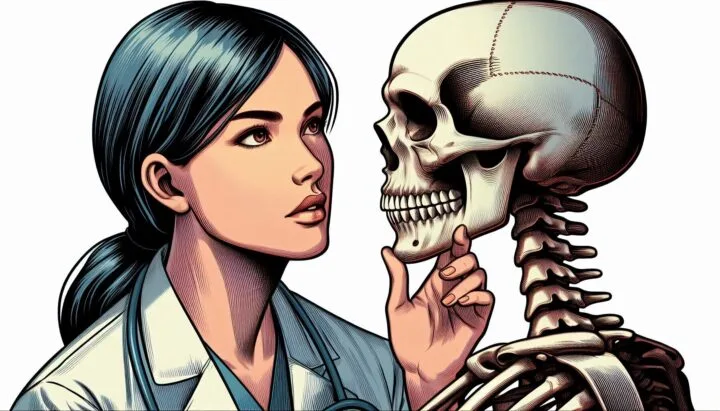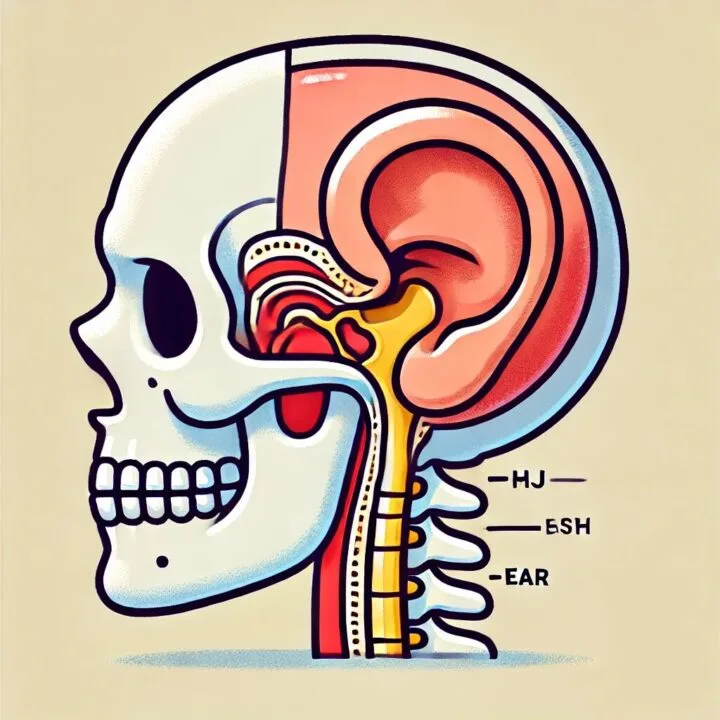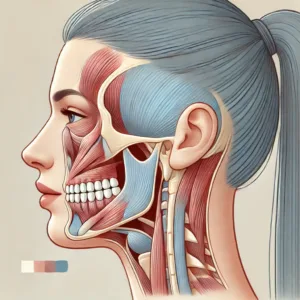TMJ
dental health and TMJ, jaw joint dysfunction, jaw muscle pain, jaw pain treatment, managing TMJ pain, temporomandibular disorder symptoms, temporomandibular joint, TMJ and headaches, TMJ causes, TMJ disorders, TMJ pain relief, TMJ physical therapy, TMJ surgery, TMJ treatment options
TC
0 Comments
Understanding the Temporomandibular Joint: Function and Care
Table of Contents

Have you ever wondered about that small but crucial joint that allows you to speak, eat, and yawn? That’s your temporomandibular joint, or TMJ for short. This remarkable hinge connects your jawbone to your skull and plays a vital role in your daily life. In this comprehensive guide, we’ll explore the ins and outs of the temporomandibular joint, its function, common issues that can arise, and how to keep it healthy. Whether you’re experiencing discomfort or simply curious about this important part of your body, this article will provide you with valuable insights into the world of TMJ.
What is the Temporomandibular Joint?
The temporomandibular joint is like the unsung hero of your facial structure. It’s a complex joint that allows your lower jaw to move up and down and side to side. Think of it as a sliding hinge that connects your jawbone to your skull. This joint is located on both sides of your head, just in front of your ears.
The Anatomy of TMJ
To truly understand the temporomandibular joint, let’s break down its key components:
- The ball and socket: The rounded end of your lower jawbone fits into a socket in your skull.
- The disc: A small, cushioning disc sits between the ball and socket, allowing for smooth movement.
- Muscles and ligaments: These surrounding structures support the joint and control its movement.
The Function of the Temporomandibular Joint
Now that we know what the TMJ is, let’s explore its crucial functions:
1. Eating and Chewing
The TMJ allows you to open and close your mouth, making it possible to bite, chew, and swallow food. It’s like the hinge on a nutcracker, providing the necessary movement to break down your meals.
2. Speaking
When you talk, your jaw moves in various directions. The TMJ makes this possible, allowing you to articulate words clearly. Without it, speaking would be a significant challenge.
3. Facial Expressions
Smiling, frowning, and other facial expressions involve subtle movements of your jaw. The TMJ facilitates these movements, helping you express emotions effectively.
Common Issues with the Temporomandibular Joint
Like any other joint in your body, the TMJ can experience problems. Let’s look at some common issues:
1. TMJ Disorders
TMJ disorders encompass a range of conditions affecting the joint and surrounding muscles. Symptoms may include:
- Pain in the jaw, face, or ear
- Difficulty opening or closing the mouth
- Clicking or popping sounds when moving the jaw
- Headaches
2. Teeth Grinding (Bruxism)
Grinding or clenching your teeth, especially during sleep, can put excessive stress on the TMJ. This is like repeatedly slamming a door – eventually, it’s going to cause wear and tear.
3. Arthritis
Just like other joints in your body, the TMJ can be affected by arthritis, leading to pain and reduced mobility.
Maintaining TMJ Health
Taking care of your temporomandibular joint is crucial for overall oral health and comfort. Here are some tips to keep your TMJ in top shape:
1. Practice Good Posture
Believe it or not, your posture can affect your TMJ. Maintaining good posture helps align your jaw properly, reducing strain on the joint.
2. Manage Stress
Stress often leads to teeth clenching and jaw tension. Finding healthy ways to manage stress, such as meditation or exercise, can help protect your TMJ.
3. Avoid Excessive Jaw Movements
While it’s tempting to crack nuts with your teeth or chew on pencils, these habits can strain your TMJ. Treat your jaw with care, just as you would any other joint in your body.
4. Eat a Soft Diet
If you’re experiencing TMJ discomfort, temporarily switching to softer foods can give your joint a much-needed break.
When to Seek Professional Help
While many TMJ issues can be managed at home, there are times when professional help is necessary. Consider seeing a healthcare provider if:
- You experience persistent pain in your jaw
- You have difficulty opening or closing your mouth
- You hear clicking or popping sounds when moving your jaw
- TMJ issues are interfering with your daily life
The Future of TMJ Care
As medical science advances, so does our understanding of the temporomandibular joint. Researchers are exploring new treatments and diagnostic tools to better manage TMJ disorders. From advanced imaging techniques to innovative therapies, the future looks promising for those dealing with TMJ issues.
Conclusion
The temporomandibular joint may be small, but its impact on your daily life is significant. From allowing you to enjoy your favorite foods to helping you express yourself through speech and facial expressions, the TMJ plays a crucial role in your overall well-being. By understanding its function and taking steps to maintain its health, you can ensure that this vital joint continues to serve you well for years to come.
Remember, your TMJ is as unique as you are. What works for one person may not work for another when it comes to managing TMJ health. If you’re experiencing persistent issues, don’t hesitate to seek professional advice. With proper care and attention, you can keep your TMJ functioning smoothly, allowing you to focus on the joys of life rather than jaw discomfort.
Take the first step towards better TMJ health today. Whether it’s being more mindful of your jaw movements or scheduling a check-up with a healthcare provider, every action counts towards maintaining this crucial joint.
FAQs
- Q: Can TMJ disorders go away on their own?
A: Some mild TMJ issues may resolve on their own with rest and self-care. However, persistent or severe symptoms should be evaluated by a healthcare professional. - Q: Is there a link between TMJ disorders and headaches?
A: Yes, TMJ disorders can often cause headaches, particularly in the temples or behind the eyes. This is due to the close connection between the jaw muscles and the muscles that wrap around the head. - Q: Can stress make TMJ problems worse?
A: Absolutely. Stress often leads to teeth clenching and jaw tension, which can exacerbate TMJ issues. Managing stress through relaxation techniques can help alleviate TMJ symptoms. - Q: Are there exercises I can do to help my TMJ?
A: Yes, there are gentle exercises that can help strengthen and stretch the jaw muscles. However, it’s important to consult with a healthcare provider before starting any exercise regimen for TMJ issues. - Q: Can diet affect TMJ health?
A: Yes, your diet can impact your TMJ. Eating softer foods can reduce strain on the joint, while avoiding hard or chewy foods can help if you’re experiencing TMJ discomfort.
Citations:
[1] https://tmj.org/living-with-tmj/treatments/
[2] https://brushinonbelmont.com/tmj-syndrome-what-are-my-tmj-treatment-options/
[3] https://www.healthline.com/health/dental-and-oral-health/chronic-tmj-pain
[4] https://cosmeticinjectables.com/procedures/health-and-wellness/botox-for-tmj/
[5] https://www.aafp.org/pubs/afp/issues/2015/0315/p378.html
[6] https://www.webmd.com/oral-health/temporomandibular-disorders-tmd
[7] https://www.mayoclinic.org/diseases-conditions/tmj/diagnosis-treatment/drc-20350945
[8] https://www.medicalnewstoday.com/articles/botox-for-tmj-benefits-before-and-after-pictures-side-effects-and-more













Post Comment